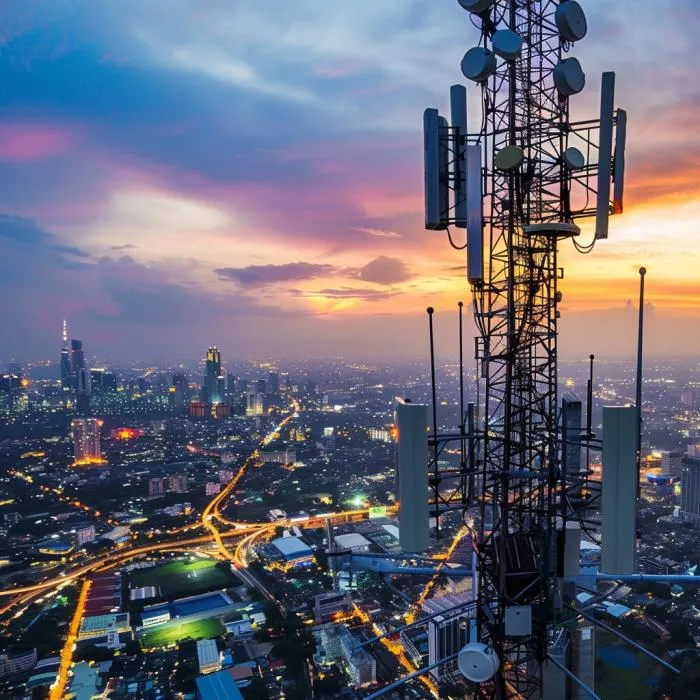
Optimizing In-Building Wireless Coverage: Best Practices and Strategies
Ensuring robust and reliable wireless coverage inside buildings is critical in today’s highly connected world. Whether for public safety, business operations, or personal communication, optimizing in-building wireless coverage requires a strategic approach. At DAS University, we aim to equip professionals with the knowledge and skills needed to design and implement effective in-building wireless solutions. This blog post explores the best practices and strategies for optimizing wireless coverage within buildings.
Understanding the Challenges
Before diving into strategies, it’s essential to understand the common challenges associated with in-building wireless coverage:
Building Materials: Modern construction materials, such as concrete, metal, and low-emissivity glass, can significantly impede wireless signals.
Building Layout: Complex layouts with multiple floors and numerous rooms can create dead zones where signals are weak or non-existent.
Interference: Other electronic devices and networks within the building can cause signal interference, reducing the quality of wireless communication.
User Density: High user density in specific areas, such as conference rooms or auditoriums, can strain the wireless network, leading to poor performance.
Best Practices for Optimizing Wireless Coverage
Conduct a Comprehensive Site Survey
Importance: A thorough site survey helps identify areas with weak or no coverage and potential sources of interference.
Tools: Use specialized tools and software to map signal strength, identify dead zones, and analyze the building’s layout.
Outcomes: The survey results will guide the placement of antennas and other equipment to ensure optimal coverage.
Choose the Right Technology
Distributed Antenna Systems (DAS): DAS is ideal for large buildings and ensures consistent coverage by distributing signals through multiple antennas.
Small Cells: Suitable for smaller areas or to enhance capacity in high-density zones, small cells can be strategically placed to boost coverage.
Wi-Fi 6: The latest Wi-Fi standard, Wi-Fi 6, offers better performance and capacity, making it a good choice for areas with high user density.
Strategic Antenna Placement
Optimal Locations: Place antennas in locations where they can provide the best coverage, such as central areas, high ceilings, and near heavy-use zones.
Avoid Obstacles: Ensure antennas are not obstructed by walls, furniture, or other objects that can block or weaken signals.
Even Distribution: Distribute antennas evenly to cover all areas, paying special attention to known dead zones identified during the site survey.
Use Signal Boosters and Repeaters
Boosters: Signal boosters can amplify weak signals, extending coverage to areas that antennas alone cannot reach.
Repeaters: Repeaters can retransmit signals, ensuring that they reach every corner of the building, especially in complex layouts.
Implement Network Segmentation
Separate Networks: Segment the network into different zones based on usage patterns and requirements. For example, create separate networks for public safety, business operations, and guest access.
Quality of Service (QoS): Implement QoS policies to prioritize critical communications, ensuring that essential services maintain high performance even under heavy load.
Regular Testing and Monitoring
Routine Checks: Regularly test the network to ensure it continues to meet coverage and performance standards.
Monitoring Tools: Use real-time monitoring tools to track network performance, identify issues, and address them promptly.
Feedback Loop: Establish a feedback loop with users to report coverage issues and adjust the network accordingly.
Advanced Strategies for Enhanced Performance
Leverage 5G Technology
Higher Speeds and Capacity: 5G technology offers significantly higher speeds and capacity, making it ideal for enhancing in-building wireless coverage.
Edge Computing: Utilize edge computing to process data closer to the source, reducing latency and improving the performance of critical applications.
Incorporate Internet of Things (IoT)
Connected Devices: Integrate IoT devices to enhance building management, security, and operational efficiency. Ensure the wireless network can support the additional load.
Smart Antennas: Use smart antennas that can dynamically adjust their patterns to optimize coverage and capacity based on real-time conditions.
Future-Proofing the Network
Scalability: Design the network with scalability in mind, allowing for easy expansion as the number of users and devices grows.
Upgrade Path: Plan for future upgrades, including the integration of new technologies and standards, to keep the network current and capable.
Conclusion
Optimizing in-building wireless coverage is essential for ensuring reliable communication in today’s interconnected world. By following best practices and implementing advanced strategies, building owners and network administrators can create robust wireless networks that meet the needs of all users. At DAS University, we are dedicated to educating and empowering professionals with the skills and knowledge to design and implement cutting-edge in-building wireless solutions. Join us to learn more about the future of wireless communication and how you can play a part in shaping it.